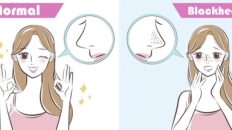Introduction
- Definition of acne
- Prevalence and impact on individuals
- The importance of understanding the condition
The Basics of Acne
- Types of acne lesions
- Whiteheads (closed comedones)
- Blackheads (open comedones)
- Papules
- Pustules
- Nodules
- Cysts
- Common locations where acne appears
What Causes Acne?
- The role of sebaceous (oil) glands
- Excess oil production
- Accumulation of dead skin cells
- Bacterial factors, especially Propionibacterium acnes (P. acnes)
- Hormonal fluctuations and their influence
- Genetics and the predisposition to acne
Acne Myths vs. Facts
- Debunking common misconceptions
- The truth about diet and acne
- Dispelling the myth of poor hygiene
The Development of Acne Lesions
- Step-by-step explanation of how acne lesions form
- The role of clogged hair follicles
- Inflammation and its impact
Types of Acne
- Understanding the characteristics of each type
- How they differ in appearance and severity
- The significance of identifying the type for effective treatment
The Emotional and Psychological Impact
- How acne affects self-esteem and confidence
- Coping with the social and emotional challenges
- Seeking support and professional guidance
Acne Across the Lifespan
- Acne in adolescence
- Adult-onset acne and its causes
- Hormonal acne: understanding the hormonal triggers
- Acne in pregnancy and its management
Seeking Help for Acne
- The importance of early intervention
- When to consult a dermatologist
- The potential consequences of untreated acne
Conclusion
- Recap of key points in understanding acne
- The hope for clearer skin and improved well-being
- The importance of seeking professional advice and treatment when needed
This outline provides a comprehensive structure for an article that covers the various aspects of understanding acne, from its basics and causes to its impact on individuals and the importance of seeking help and treatment. Each section can be further developed into a detailed article.



